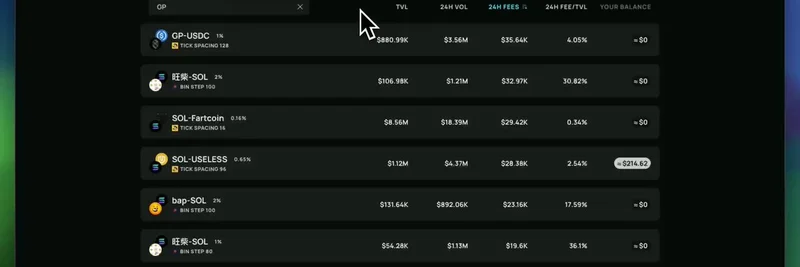In the ever-evolving world of decentralized finance (DeFi), liquidity provision is a critical component that can significantly impact your earnings. Recently, a tweet from Bradydon, a prominent figure in the crypto space, shed light on the use of HawkFi's automated liquidity provision tools for GP Coin. This article delves into the strategies discussed, comparing the performance of Orca and Meteora platforms, and provides a comprehensive guide for blockchain practitioners looking to optimize their yields.
Understanding HawkFi's Automated Liquidity Provision
HawkFi is a platform that simplifies the process of liquidity provision by automating the tedious aspects of managing liquidity pools. This automation ensures that users can maximize their earnings without the constant need for manual adjustments. The tweet highlights a practical application of this technology, where Bradydon experiments with single-side, tight-range, 1-hour directional (up-only) autorebalances on both Orca and Meteora platforms.
Key Takeaways from the Tweet
- GP Coin Volumes and Price Movement: Despite a dip in price, GP Coin's trading volume remains robust, indicating strong market interest.
- Daily Yields: Orca offers a 4.1% daily yield, while Meteora provides a 3.3% yield, showcasing the potential returns from these platforms.
- Experimentation: Bradydon allocates SOL into both Orca and Meteora to determine which platform yields better results under similar conditions.
Comparing Orca and Meteora
Orca's Whirlpools and Standard Pools
Orca has been successful in attracting liquidity through its Whirlpools and standard pools, offering competitive Annual Percentage Yields (APYs) derived from trading fees and additional incentives. The platform's user-friendly interface and robust liquidity make it a popular choice among DeFi users.
Meteora's Dynamic Liquidity Market Maker (DLMM) Pools
Meteora, on the other hand, introduces innovative DLMM pools that optimize liquidity provision and yield generation. Its Dynamic Vaults feature enhances yield on idle LP capital, making it an attractive option for those looking to maximize returns. The platform also supports community projects like M3M3, which aim to build additional mechanisms such as staking and fee-rewards for meme coins.
The Experiment: Single-Side, Tight-Range, 1-Hour Directional Autorebalances
Bradydon's experiment focuses on a specific strategy: single-side, tight-range, 1-hour directional (up-only) autorebalances. This approach involves:
- Single-Side Exposure: Providing liquidity for only one asset, in this case, SOL.
- Tight Range: Setting a narrow price range to capitalize on small price movements.
- 1-Hour Directional (Up-Only): Autorebalancing the position every hour, but only in the upward direction, to take advantage of price increases.
Step-by-Step Process
The video embedded in the tweet provides a detailed walkthrough of the process:
- Selecting the Pool: Bradydon chooses the GP-USDC pool on HawkFi's dashboard.
- Setting the Price Range: A custom price range is set to focus on the desired price movements.
- Depositing Liquidity: SOL is deposited into the pool, and the autorebalance feature is activated.
- Monitoring and Adjusting: The platform automatically adjusts the position based on the set parameters, ensuring optimal yield.
SEO-Optimized Insights for Blockchain Practitioners
For those new to DeFi, understanding the nuances of liquidity provision can be daunting. Here’s a simplified explanation:
- Liquidity Provision: This is the act of adding funds to a liquidity pool, which facilitates trading on decentralized exchanges. In return, providers earn a portion of the trading fees.
- Autorebalance: An automated feature that adjusts your position in the liquidity pool to maintain the desired exposure, reducing the need for manual intervention.
- Yield Farming: The practice of staking or lending crypto assets to generate high returns, often through platforms like HawkFi.
Why This Matters
The experiment conducted by Bradydon is crucial for several reasons:
- Comparative Analysis: It provides a real-world comparison between Orca and Meteora, helping users make informed decisions.
- Automation Benefits: It highlights the efficiency and potential returns of automated strategies in DeFi.
- Market Trends: The focus on GP Coin and its volume despite price dips offers insights into market dynamics and investor behavior.
Conclusion
HawkFi's automated liquidity provision tools, as demonstrated in Bradydon's tweet, offer a powerful solution for maximizing yields in the DeFi space. By comparing Orca and Meteora, practitioners can better understand which platform aligns with their investment strategies. Whether you're a seasoned DeFi user or just starting, leveraging such tools can significantly enhance your earning potential.
For more insights into meme tokens and the latest DeFi trends, stay tuned to Meme Insider. Happy yield farming!



